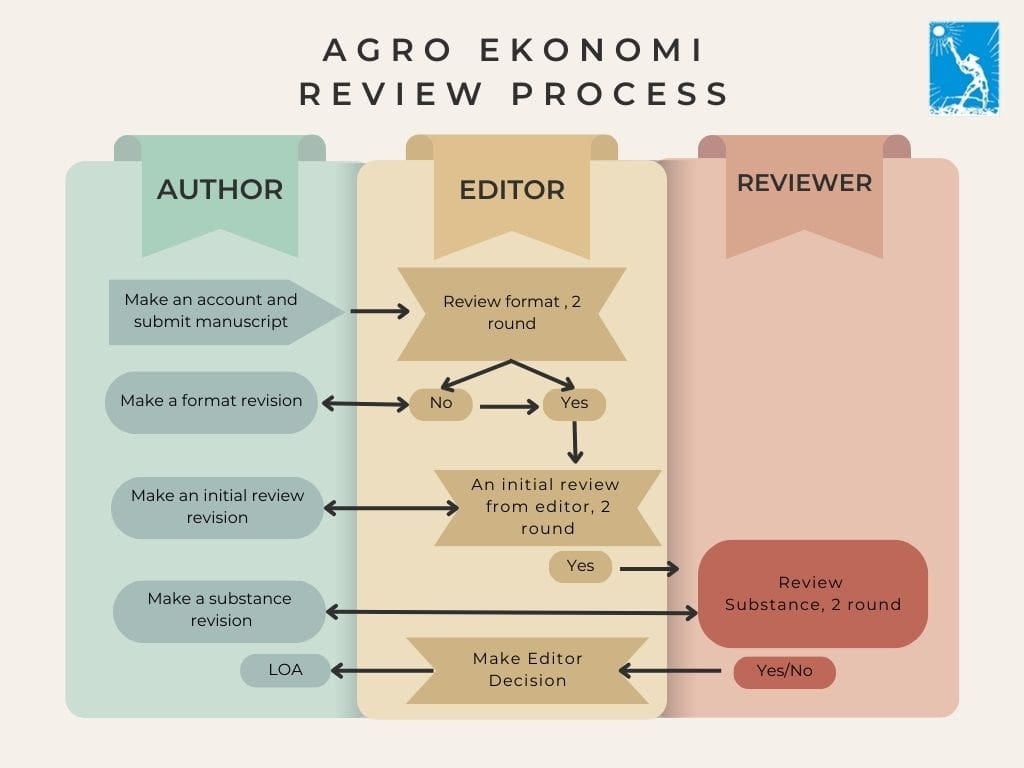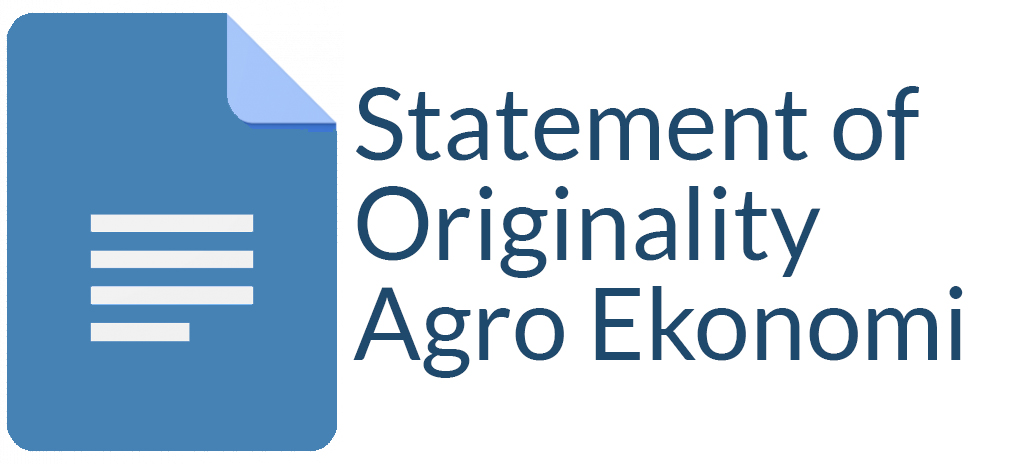Analysis Competitiveness of Sugarcane Farming in Central Java and East Java
Wahyu Adhi Saputro(1*), Masyhuri Masyhuri(2), Any Suryantini(3)
(1) Master Student of Agricultural Economics, Faculty of Agriculture, UGM
(2) Faculty of Agriculture, UGM
(3) Faculty of Agriculture, UGM
(*) Corresponding Author
Abstract
This study aims to determine the competitiveness of sugarcane farming in Central Java and East Java based on comparative advantage (DRCR) and competitive advantage (PCR). The method used was the Policy Analysis Matrix (PAM). The result in Central Java explained that the sugarcane farming do not have comparative advantage but have competitive advantage. It is indicated by the value of Domestic Resource Cost Ratio DRCR>1 which is 1.23 and the value of Private Cost Ratio PCR<1 which is 0.71. Meanwhile The result in East Java explained that the sugarcane farming do not have comparative advantage but have competitive advantage. It is indicated by the value of DRCR>1 which is 1.05 and the value of PCR<1 which is 0.56. Partial test was conducted to find out how many respondents in each region in Central Java and East Java that have competitiveness sugarcane farming. Based on the partial test of each respondent in Central Java, about 51.67%, 45.00% and 3.33% of respondents are categorized as very competitive, medium competitiveness and very low competitive respectively. Meanwhile, in East Java Province, there are 25.00% of respondents with very high competitiveness, 65.00% medium competitiveness and 10.00% very low competitive.
Keywords
Full Text:
PDFReferences
Ariani, M., Askin, A, dan Hestina, J. 2006. Analisis daya saing usahatani tebu di Propinsi Jawa Timur. Junal Sosial Ekonomi Pertanian dan Agribisnis Hal: 1 19.
Fitriani., Sutarni., dan Irawati,L. 2013. Faktor-Faktor yang Mempengaruhi Produksi, Curahan Kerja dan Konsumsi Petani Tebu Rakyat di Propinsi Lampung. Jurnal Ilmiah ESAI Volume 7 No.1 Hal : 1.
Gittinger, J. P. 1986. Analisa Ekonomi Proyek-proyek Pertanian Edisi II. Universitas Indonesia Press, Jakarta.
Kurniasari, R. I., D. H. Darwanto, dan S. Widodo. 2015. Permintaan gula kristal mentah Indonesia. Ilmu Pertanian. Vol 18 : 24 – 30.
Marjaya, Hartono S, Masyhuri, Darwanto DH. 2013. Analisis Daya Saing Komoditas pada Sistem Usahatani Integrasi Jagung-sapi di Kabupaten Kupang. Jurnal Agribisnis 2: 15-29.
Ogbe, A, O., Okurawa, V, O., and Saka, O.J. 2011. Competitiveness of Nigerian Rice and Maize Production Ecologies : A Policy Analysis Approach, Tropical and Subtropical Agroecosystem Journal, 14: 493-500
Pearson, S.R., Gotsch, C., dan Bahri, S. 2004. Aplikasi Policy Analysis Matrix Pada Pertanian Indonesia. Yayasan Obor Indonesia, Jakarta.
Prabowo, A. S. 2013. Analisis faktor-faktor yang mempengaruhi produksi gula di Jawa Tengah 2004 – 2013. Economics Development Analysis Journal.5 Vol 3 : 420 – 426.
Saptana, Supena, dan Bastuti,T. P. 2002. Efisiensi dan Daya Saing Usahatani Tebu dan Tembakau di Jawa Timur dan Jawa Tengah. Pusat penelitian dan Pengembangan sosial Ekonomi Pertanian.
Setiawan, K., Hartono, S., dan Suryantini, A. 2014.Analisis Daya Saing Komoditas Kelapa di Kabupaten Kupang. Jurnal Agritech Vol. 34 No. 1 Hal: 88-9.
Soetrion. 2004. Analisis Daya Saing Komoditas Kedelai di Sentra Produksi Guna Menunjang Pengembangan Agroindustri. Jurnal Agroekonomi 11 (2): 82 - 91
Susilowati, S.H dan Tinaprilla, N. 2012. Analisis efisiensi usahatanu tebu di Jawa Timur. Jurnal Littri (18): 162—172.
Article Metrics
Refbacks
- There are currently no refbacks.
Copyright (c) 2018 Agro Ekonomi

This work is licensed under a Creative Commons Attribution-ShareAlike 4.0 International License.
View My Stats











